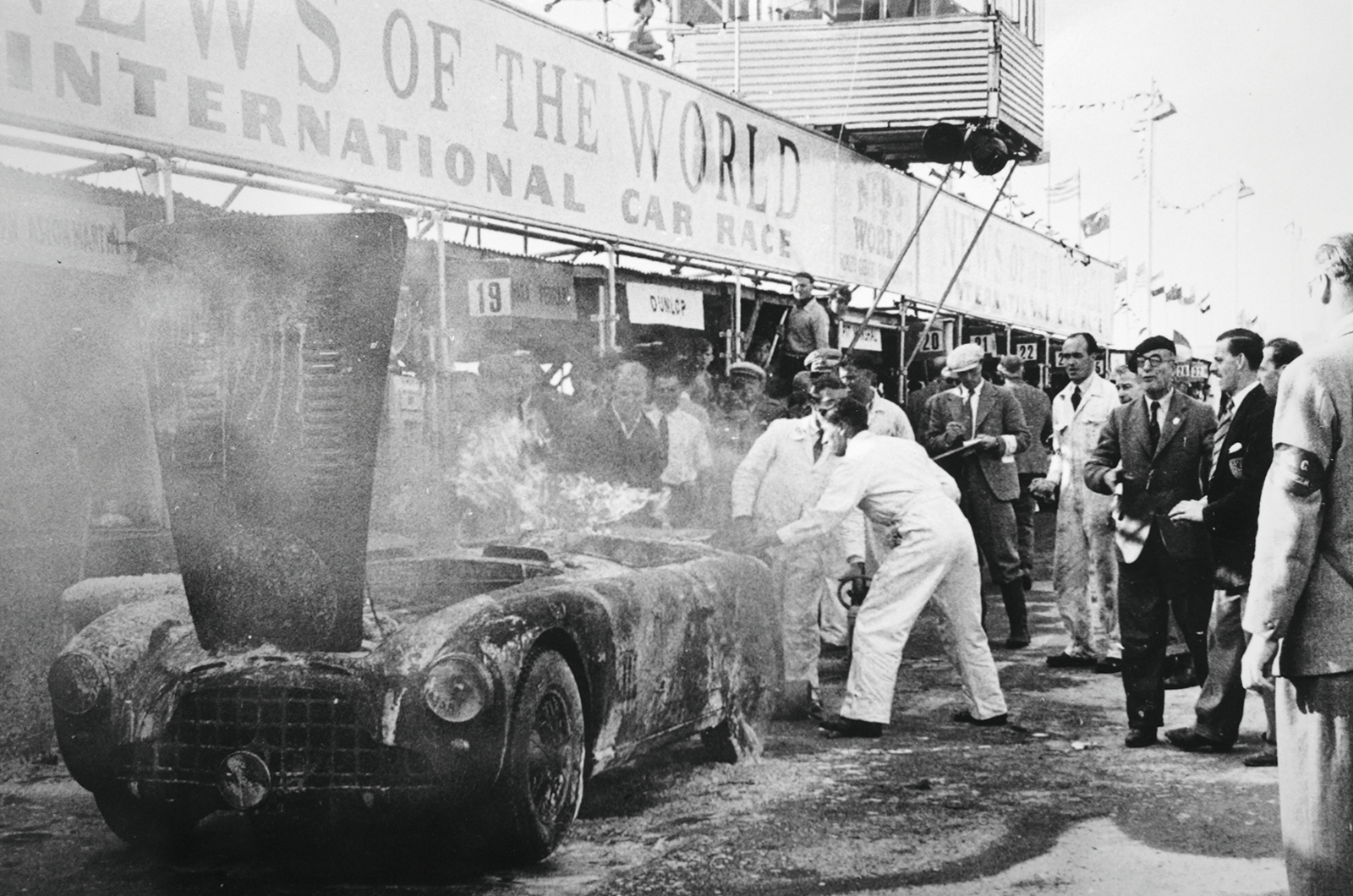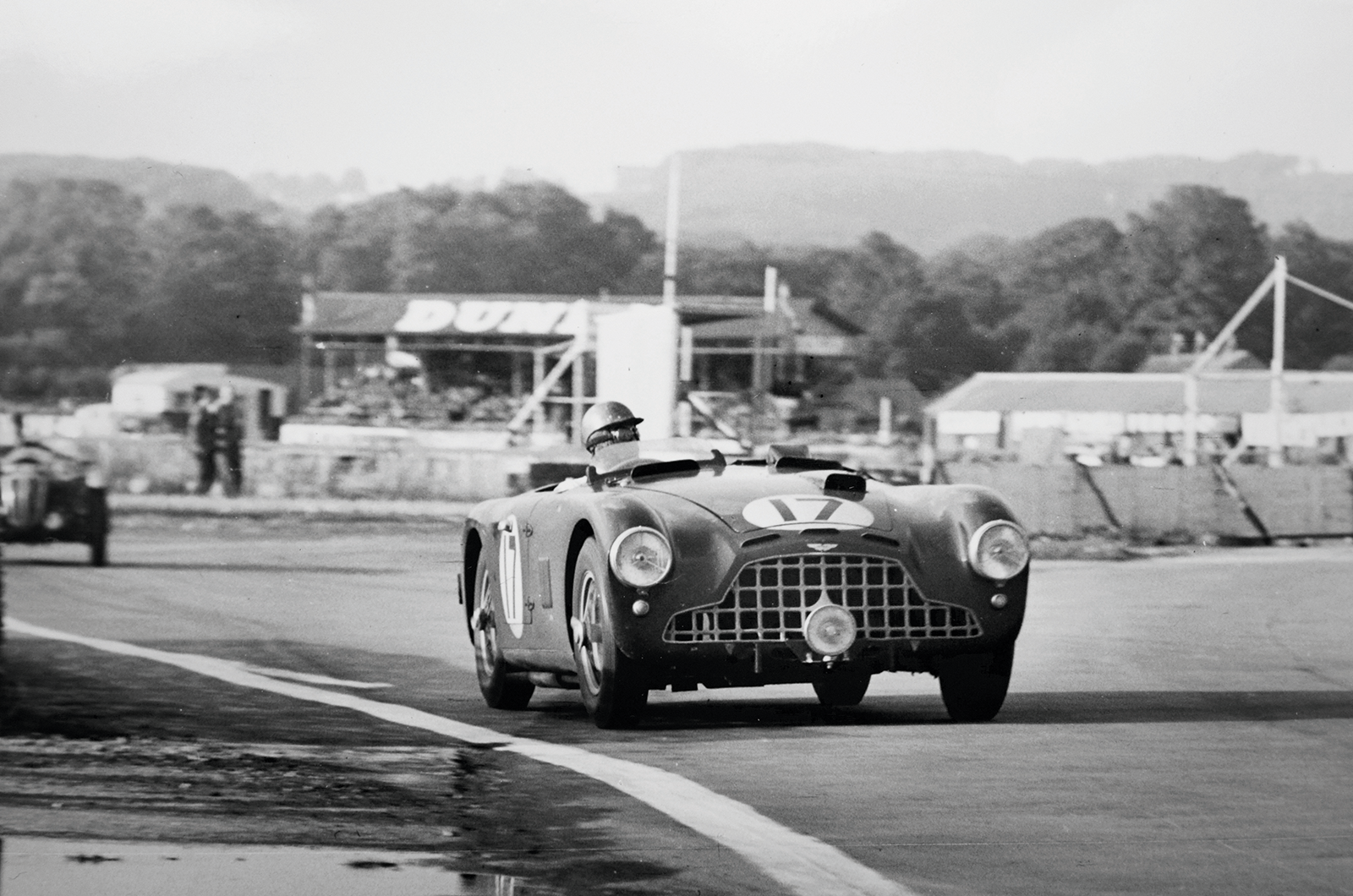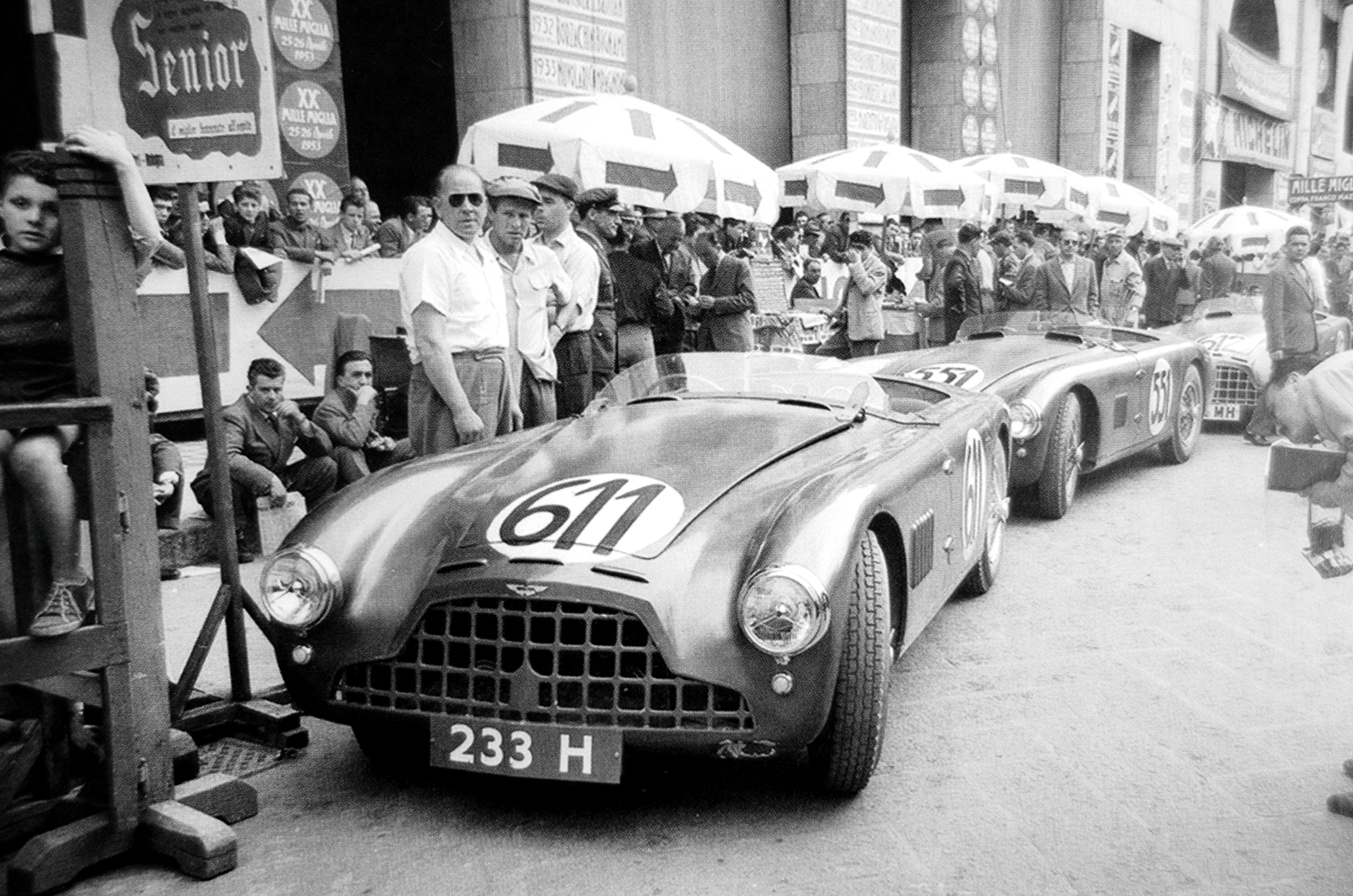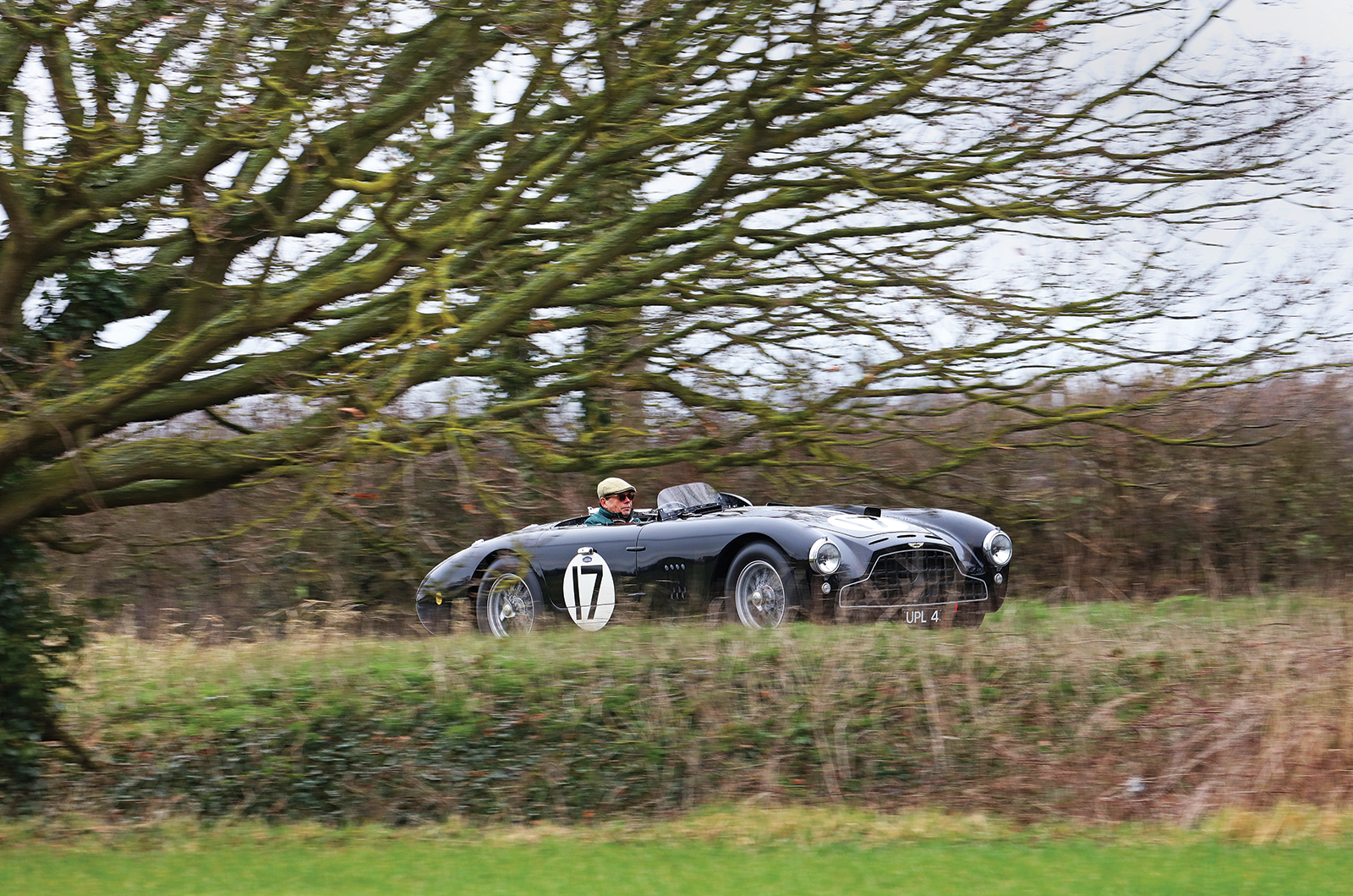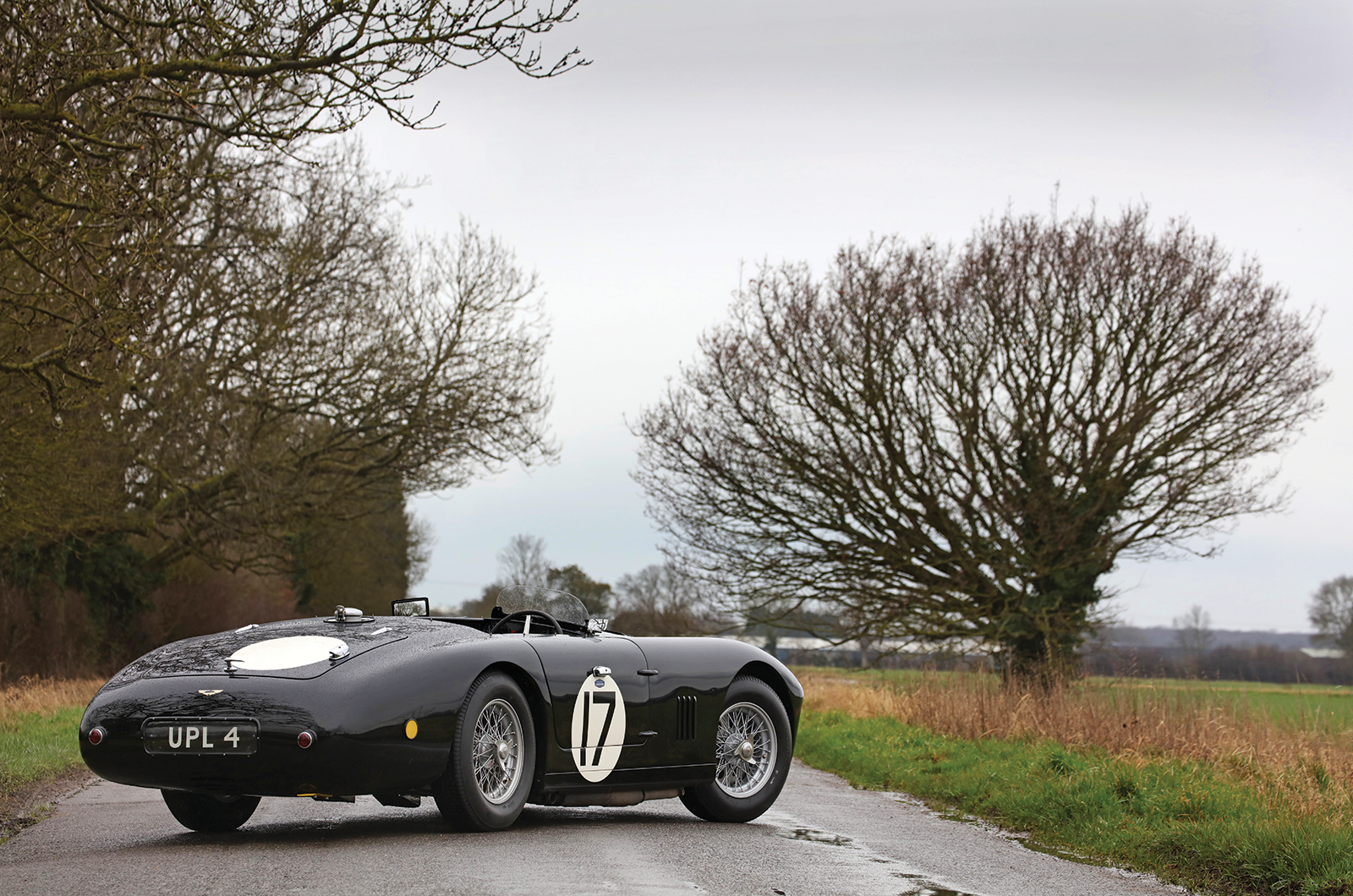Originally a C-type was on Melling’s dream list but, guided by experienced historic racing specialist Rick Hall and son Rob, he switched to an Aston.
“When the DB3 became available it seemed a rarer and more interesting option,” says Rob. “With the car’s history it was eligible for all the top events, and with just 10 built it was more likely to guarantee an entry. The downside was all the period performance limitations, particularly the weight and small brakes.”
Hall & Hall was convinced that the DB3’s performance could be transformed without modifications that would spoil its originality. A new engine was built around an original spare block from Four Ashes Garage, with a lighter crank and pistons.
“It now revs a lot easier with plenty of low-down torque, which makes it very tractable,” says Rob, who has raced it extensively including winning back at Goodwood in 2017’s Freddie March Memorial Trophy.
“It’s a nice old girl with very neutral handling. With our stiffer front and softer rear set-up, the turn-in is good through fast corners and you can control it nicely on the throttle. The steering is heavy, but I prefer it that way because it gives more feel. The car seems to suit Goodwood.”
Having watched both Halls race DB3/5, I was very excited about a test drive around the open Fenland roads near their impressive workshops.
Although the car’s styling lacks the sexy curves of its successor, the solid-looking DB3 takes you back to the early ’50s. With its portcullis-style grille and square sides, it looks like a full-size Dinky toy casting, but new Borannis with exotic three-eared spinners enhance its functional aura. Carrying number 17, honouring its Goodwood win, and early ‘ram air’-style bonnet duct, the car only lacks the signature centre spotlight.
Pulling open the long door and slipping down into the low leather bucket seat, you can’t help but reflect on the car’s colourful history, be it Collins conserving the ill-sounding engine around a pitch-dark Goodwood, or Abecassis at Sebring cursing slower cars as he chased into a Florida sunset with a broken headlight.
Feeley designed the DB3’s body in two parts for easy access to the chassis, but it leaked badly
You sit low in the cockpit, legs outstretched on the aluminium floor to the well-spaced pedals with a handy footrest on the transmission tunnel. The dash layout is strange, with no dials directly behind the three spoke, leather-trimmed steering wheel; the black-faced instruments are all offset, taking your eye away from the road ahead.
Although the gauges are new, the ignition switch with Bakelite knob is original and probably thumbed by heroes Collins and Abecassis.
Turn the key, flick on the fuel-pump switch, thumb the starter and the straight-six wakes with a rich, deep rasp. Driving out of Bourne on wet roads, the gearbox feels stiff, the clutch fierce and the steering weighty, but once everything is warmed up and speed increases, the controls reassure.
The all-synchromesh gearchange via a short, stubby lever in a close gate is slick, but I can’t resist double declutching just to hear that crisp exhaust. Out on deserted, flat roads the power delivery is smooth, the torque encouraging ever faster corner exits.
With its firm set-up the car feels flat and neutral through the bends. Even the brakes inspire once warmed, but it’s no doubt a different story after relentless laps being chased by hot-rod Cooper-Jaguars.
As in most competition Astons, you feel relaxed in a cockpit whose layout is well thought out for endurance races. Even with just an aeroscreen for protection, my flat cap stays on at speed and I’d love to experience the car at night, but wet weather forces us to turn the immaculately prepared machine back to Bourne. Hours later I can still hear that raucous straight-six.
Owner Melling has taken chassis 5 to all the major historic events where DB3s originally raced, but with none of the dramas that cursed the team in period. Be it Hall retracing Collins’ winning way at Goodwood, or Melling driving through the morning mist across Tuscany, there’s nothing like taking a great car back to where it made history to celebrate the characters that designed, developed and raced them.
Images: James Mann
Thanks to Rick and Rob Hall
This was originally in our June 2018 magazine; all information was correct at the date of original publication
READ MORE
Mazda at Le Mans: 30 years on
The hero to zero and back tale of this Jaguar D-type
Jaguar D-type vs Aston Martin DB3S: Won for the road
Mick Walsh
Mick Walsh is Classic & Sports Car’s International Editor




